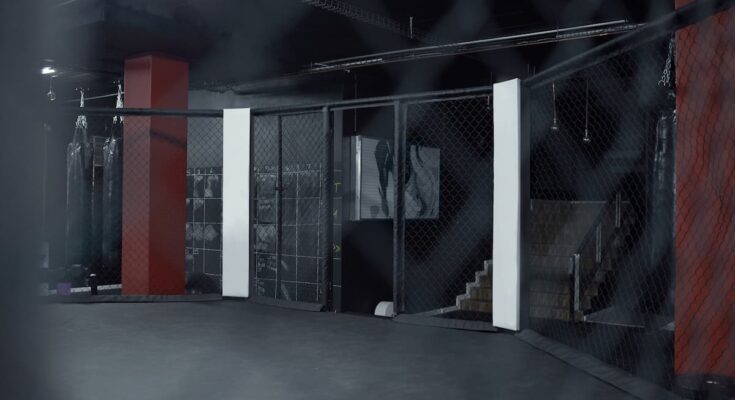Gable Steveson’s step into mixed martial arts is one of the biggest talking points in combat sports right now. Fans, analysts, and fighters are all watching closely. Much like the rapidly growing interest in casinos not on GamStop in the UK, his debut at LFA 217 is drawing considerable attention. This is a breakdown of what to expect — advantages he brings, challenges he’ll face, and how this bout might unfold.
Background: Who Gable Steveson Is
Before diving into his MMA future, it helps to look at Steveson’s career so far. His achievements in wrestling, college competition, and a brief WWE run set the stage for his upcoming fight. Known for his Olympic gold medal in freestyle wrestling at Tokyo 2020, he has also drawn attention outside the mat for his charisma and presence, often associated with men’s style and athletic confidence.
- Steveson is an Olympic gold medalist in freestyle wrestling, winning in Tokyo 2020.
- During his college years at the University of Minnesota, he became a two-time NCAA Division I heavyweight champion. He also won the Dan Hodge Trophy twice (given to the best college wrestler), and he was a five-time All-American.
- After college, he had a stint with WWE and then returned to wrestling for his final year of eligibility, but he suffered a big upset loss in the NCAA finals to Wyatt Hendrickson.
Setting: The Debut Fight
Every debut needs context. Here’s when and where Steveson’s first MMA match will take place, plus details on his opponent and how fans can watch.
- Date: 12 September 2025
- Event: LFA 217, held at Mystic Lake Casino Hotel in Prior Lake, Minnesota.
- Opponent: Braden Peterson, who has a 1-0 professional record with a 14-second TKO win in his pro debut.
- Stream / viewing: The fight will be shown on UFC Fight Pass.
What Steveson Brings to MMA
Steveson isn’t entering MMA as a blank slate. He has tools that could immediately make him a problem for opponents. Let’s look at his biggest strengths heading into LFA 217.
- Wrestling Base
Steveson has elite wrestling. His takedowns, balance, control on the ground, and ability to dominate in positional battles are well known. That gives him a head start. That kind of grappling pedigree typically gives a fighter strong defensive wrestling and an ability to dictate where the fight goes. - Physical Tools and Athleticism
He is strong, explosive, and durable. His conditioning may need adjustment (MMA pacing is different), but his raw strength and explosiveness are assets. These help both in wrestling and defending takedowns, as well as in transitions (moving from standing to ground or vice versa). Also, he has trained with experienced MMA camps, including Syndicate MMA, and worked with names like Jon Jones. - Experience Under Pressure
Big matches in wrestling, wrestling finals, representing at the Olympics — these carry pressure. Steveson has shown he can perform when expectations are high. That helps in MMA, where mental toughness, handling stress, and staying calm in chaotic moments are key. - Fast Learning Curve Potential
Fighters with strong bases in one combat or grappling discipline often learn quickly in others. Steveson’s exposure to striking, jiu-jitsu (or other submission grappling), and MMA-specific training suggests he has been working on the weaker parts already. Similar cases of wrestlers transitioning to MMA show how that foundation can shorten the adaptation period.
Anticipated Challenges for Steveson
No transition is without obstacles. For Steveson, the real test is how he adapts to striking, submissions, and MMA’s unique demands outside of wrestling.
- Striking: Offense and Defense
Wrestling does not train you to take punches, kicks, elbows. Getting hit in striking exchanges tests different reflexes and reactions. He’ll need to learn distance management, timing, and defending strikes on the feet. Striking defence can make or break a debut. Also, offence with strikes (punches, kicks, set-ups) will be needed; he can’t rely only on takedowns. - Submission Grappling and Ground Game Outside Wrestling
Wrestling and jiu-jitsu share overlaps, but submissions (chokes, joint locks), transitions, and guard work are different. His experience in wrestling may make certain things easier, but he must be wary of being caught if he’s not used to submission threats from various positions. - Conditioning Specific to MMA
Wrestling matches are intense but shorter, with different rules, different pacing. MMA rounds involve striking, grappling, ground control, changes in tempo. Cardiovascular and muscular endurance for long fights, absorbing damage, working from bad positions will be new demands. - Defending vs. Experienced MMA Fighters
Peterson is not a big name, but he holds experience in an MMA context, has a knockout, knows how to prepare for striking and stand-up exchanges. Also, MMA fight IQ (knowing when to strike, when to grapple, when to rest, how to avoid danger) is very important. Steveson will need to show he can integrate all phases of combat under pressure. - Mental Adjustment
Taking damage (especially strikes), dealing with being on the back foot or in danger, is different from wrestling, where many rules protect or define positions differently. Accounts such as James Haskell MMA experience show how even seasoned athletes struggle with the mental shock of being hit or controlled in ways unfamiliar from other sports.
What To Watch For: Key Factors in the Fight
When the cage door closes, a few specific elements will decide how the fight plays out. These are the areas fans should keep their eyes on.
- Takedown Attempts and Control
A big question is how often Steveson will shoot for takedowns. If he can get them early, use them to control pace and negate striking threats, that would favour him. Also, how he handles sprawl defence, transition to submissions or ground and pound. - Striking Exchanges
Will he stand and strike early, or try to get the fight to the mat right away? How well is his offensive striking (jabs, combinations, leg kicks), how tight is his guard? Also defensive striking — head movement, footwork. If Peterson lands early big shots, that may shift momentum. - Clinch Work
Steveson’s wrestling helps in clinch: controlling body, breaking posture, pushing opponent against cage. How well he uses clinch to set up takedowns or strikes could be decisive. - Cardio and Fight Pace
How well he handles the early rounds versus later rounds. If Peterson can take Steveson into later rounds, where fatigue may set in or where striking damage builds up, that could change dynamics. Steveson’s ability to maintain pressure, defend being hit, stay composed, will matter. - Corner Strategy and Adaptation
Mid-fight adjustments matter a lot in MMA. If Steveson or his corner notice Peterson’s striking or timing, do they adapt? Do they slow pace, change angle, shift from one strategy to another? These will show whether Steveson is ready for pro MMA.
What This Fight Means: Bigger Picture
This isn’t just another card fight. Steveson’s performance could shape the next stage of his career and influence how quickly he moves into bigger promotions.
- This is not just one fight. It’s a transition point. If Steveson shows well, fans will expect him to move quickly toward top promotions (UFC or others). LFA has historically been one of the feeder circuits. Many fighters who perform strong in LFA get noticed.
- If he wins decisively, he will gain respect from those who doubt wrestling-heavy fighters can adapt to MMA. At the same time, critics often highlight that professional wrestlers in MMA face unique challenges, since the sport is far removed from scripted performance. If he struggles or loses, many will frame it as part of growth — but depending on how he loses (by submission, by knockout, decision) the critiques will differ.
- For Peterson, this is a huge chance. Even if he loses, performing well vs an Olympian in MMA debut will raise his profile. If he can upset, that would be major.
Possible Scenarios: How the Fight Might Play Out
Every debut has multiple possible outcomes. Here are the most realistic ways Steveson vs. Peterson could unfold based on styles and experience.
- Scenario A: Steveson Dominates Early
He starts with takedowns, seizes control on ground, uses top pressure, maybe lands ground strikes. He limits damage from Peterson’s striking, imposes wrestling at will. Could lead to submission or ground-and-pound finish if Peterson cannot escape or defend. - Scenario B: Mixed Game, Adjustments Required
Fight starts standing. Peterson lands strikes; Steveson attempts takedowns but is met with good defence. Maybe Steveson secures takedown later rounds, but Peterson keeps it close in early rounds. Judges may see a close fight. Steveson’s grit and adaptation become visible. - Scenario C: Striking Heavy, Peterson Shines
Peterson connects early strikes, possibly hurts Steveson. Steveson may struggle to get fight to ground. If his striking defence is not ready, Peterson may build momentum. Could result in late standing finish or stoppage. - Scenario D: Battle of Cardio
If fight drags, maybe into later rounds or deep into grappling exchanges, Steveson’s conditioning and stamina may be tested. Fatigue might open up gaps in defence. Will Steveson sustain intensity?
Risks and Uncertainties
The fight also carries unknowns. Some factors can’t be predicted until Steveson actually steps into the cage and feels the heat of combat.
- First pro fight jitters. No matter how decorated a wrestler you are, stepping into the cage with gloves, striking allowed, submissions allowed, risk of cuts, damage, different rule set — those bring nerves.
- Unknown reaction to strikes. Even wrestlers who are tough may take damage more easily in MMA if they haven’t trained striking or been hit in the face often.
- Opponent surprises. Peterson could have tools or improvements not visible in his record. Sometimes fighters with less experience have fewer expectations and more unpredictable moves.
- Rule adaptation: MMA has cage vs ring, rounds, weight changes, gloves smaller than wrestling, different scoring, danger positions. Adapting to all that under live pressure is not automatic.
What Fans Should Watch Closely
If you’re tuning in, certain details will reveal how well Steveson is adapting. These are the technical and mental signs to pay attention to.
- How clean Steveson’s entries are: his level changes, shot set-ups, feints to mask takedowns.
- His defensive wrestling: sprawl, posture, ability to prevent dirty boxing in clinch.
- His striking defence: jabs, counters, head movement, clinch striking.
- Cage awareness: using fence to control opponent, defend takedowns, or to escape, reset.
- Reaction after absorbing damage: Does he recover?
- Fight IQ: when he gets into trouble, can he adapt?
Conclusion
Gable Steveson’s MMA debut at LFA 217 is a major event, not only because of his reputation in wrestling, but because this kind of transition tests something different from raw talent. If he blends his elite wrestling with competent striking, submission defence, good cardio, and mental toughness, he can deliver a strong performance.
Source link




